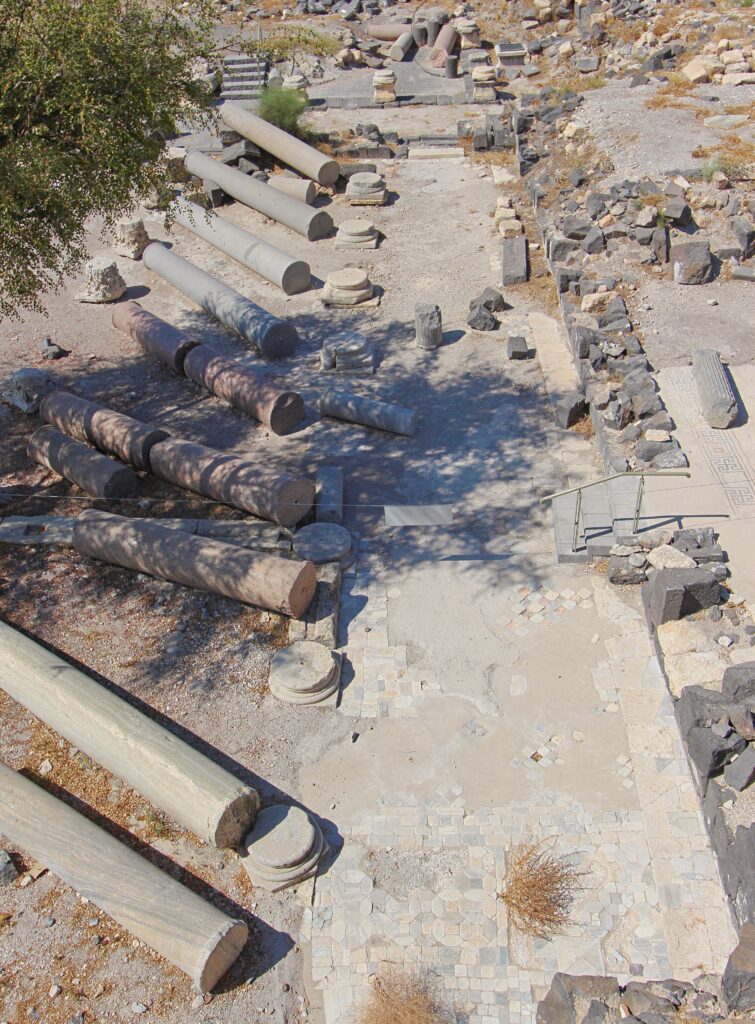
Sussita, also spelled Susita, is the Aramaic name for the Decapolis city of Hippos (which is the Greek name). Both names mean “horse” in their respective languages. The 10 cities of the Decapolis were autonomous but, dependent upon Rome for protection. Nine of the cities were east of the Jordan River and Sea of Galilee in today’s countries of Jordan and Syria, and a few in Israel. The 10th city is west of the Jordan in Israel.
Sussita is situated on an outcropping hill on the slopes of the Golan Heights. It has a wonderful view of the entire Sea of Galilee; you can look out and see both Tiberius and Capernaum, Mount of Beatitudes, and Tabgha from Sussita. The city was founded in the 300’s B.C. and reached its zenith in the Roman-Byzantine periods 37 B.C. to 640 A.D. The city was destroyed by an earthquake in 749 A.D. and abandoned by the surviving inhabitants.
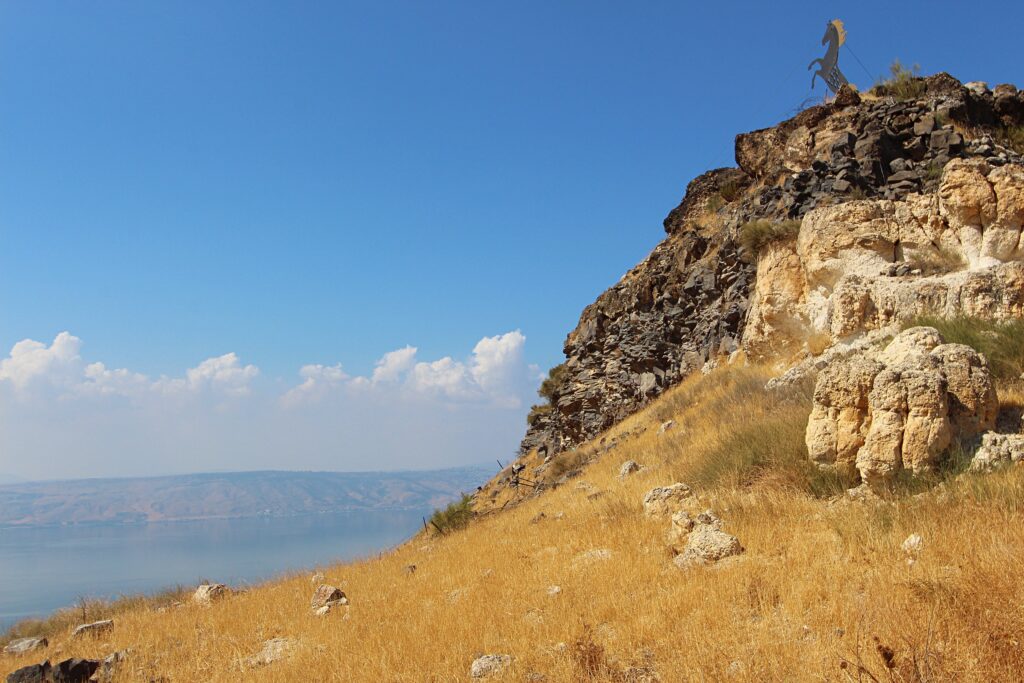
The city is a good example of Jesus’ exemplary teaching of “A city set on a hill cannot be hidden” (Matthew 5:14).
The city was close to and overlooked the place near Gergesa where the miracle of the swine took place (Matthew 8:28–34).
During the time of Christ, the city was majority pagan Greeks (referred to as Hellenists) with minority populations of Jews and Arabs. During Byzantine times the city had mostly converted to Christianity. Archeologists have excavated eight churches in the city.
The city was laid out in the typical Greco-Roman street plan with straight streets intersecting at right angles.
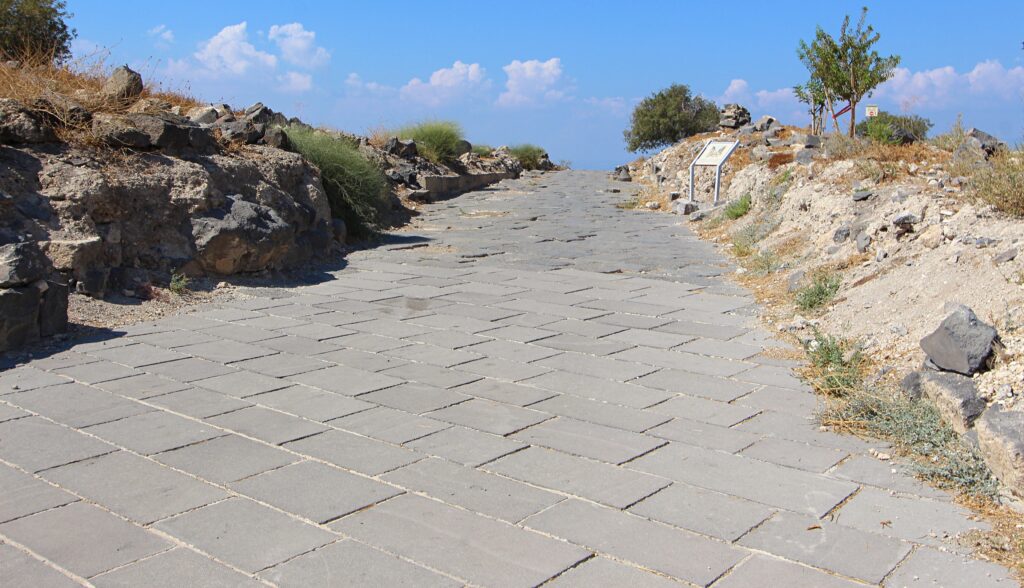
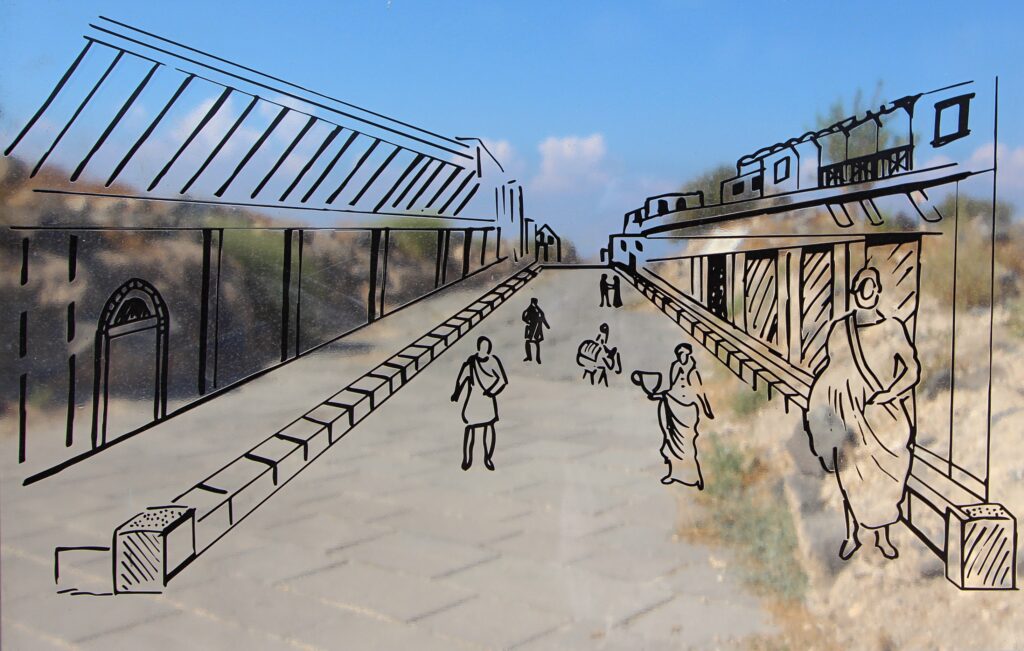
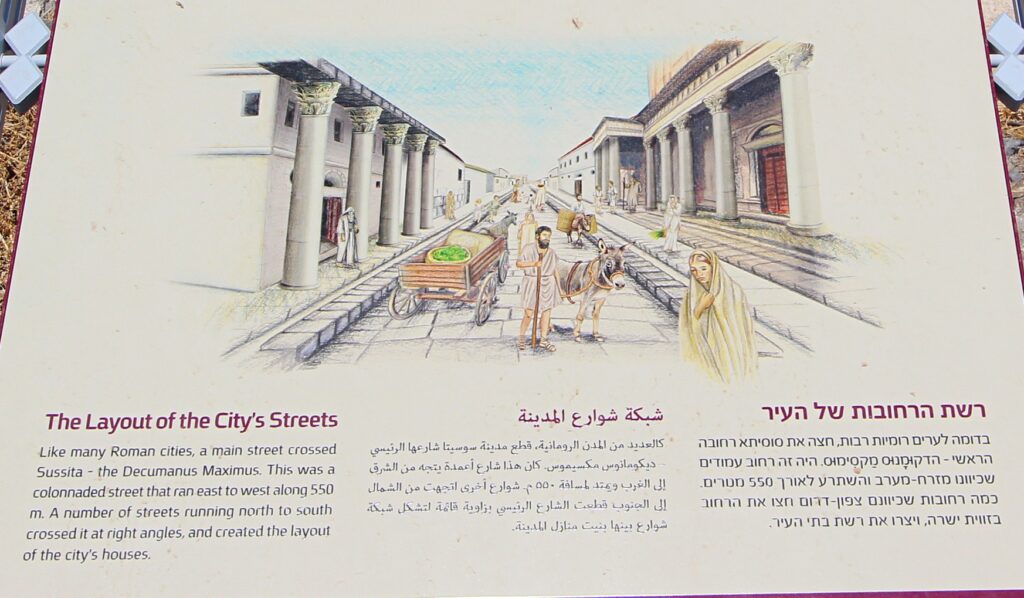
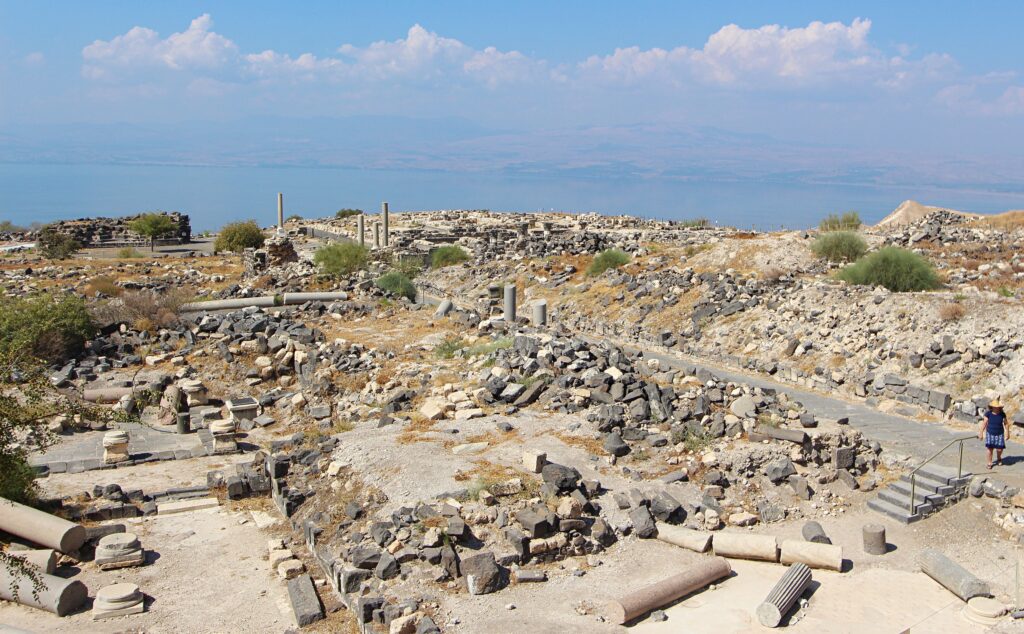
< Previous post on Qumran and the Dead Sea Scrolls
Return to the Home Page
Next post on Olive and Olive Oil: Health Facts and Religious Symbols >